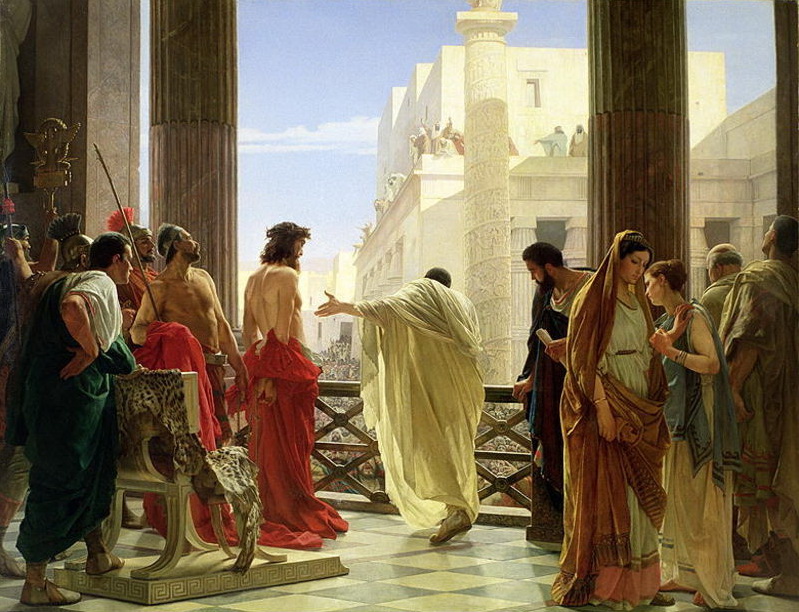This study reconstructs the historical Pontius Pilate and looks at the way in which he is used as a literary character in the works of six first century authors: Philo, Josephus and the four evangelists. The first chapter provides an introduction to the history and formation of the imperial Roman province of Judaea. The following two chapters examine the references to Pilate in Philo and Josephus, looking at each author’s biases before going on to assess the historicity of their accounts. The next four chapters look at the portrayal of Pilate in each gospel, asking how a first century reader would have interpreted his actions.
Each chapter asks what this portrayal shows about the author’s attitude towards the Roman state, and what kind of community found this useful. The conclusion distinguishes between the ‘historical Pilate’ and the different ‘Pilate of interpretation’ preserved in our first century literary sources.
Pontius Pilate in History and Interpretation
A collection of essays by leading scholars on Pilate’s historical and literary significance.
Helen Bond: Personal Chair in Christian Origins, School of Divinity
Scholars have studied a variety of aspects of Pontius Pilate’s life and career, including his political and administrative activities in the province of Judea, his relationship with the Jewish religious leaders of the time, and his role in the trial and execution of Jesus. Some examples of other academic research include:
- “Pontius Pilate: A Political Biography” by Ann Wroe – a comprehensive study of Pilate’s life, career, and impact on Roman and Jewish history.
- “Pontius Pilate: Portraits of a Roman Governor” by Warren Carter – a study of the historical and literary representations of Pilate in early Christian and Jewish texts.
- “The Trial and Death of Jesus: Essays on the Passion Narrative in Mark” edited by David R. Bauer and Mark Allan Powell – includes several essays on Pilate’s role in the trial and crucifixion of Jesus.
During the time of Pontius Pilate in Judea, education was primarily provided through religious institutions such as synagogues and schools attached to them. The Jewish people placed a high value on education and saw it as a way to preserve their cultural and religious traditions.
Boys were typically educated in the Torah, which consisted of the first five books of the Hebrew Bible, as well as in other Jewish texts and traditions. Girls, on the other hand, were not typically given formal education and were instead taught by their mothers in the home.
In addition to religious education, some Jewish boys may have received instruction in the Greek language and culture, which was prevalent in the region due to the influence of the Hellenistic world. However, this was not common among the broader population and was largely limited to wealthier and more privileged families.
Overall, the educational system in Judea during Pontius Pilate’s time was centered on religious instruction and the preservation of Jewish traditions and values. It was not until later in history, during the time of the Mishnah and Talmud, that a more formalized system of Jewish education emerged.









